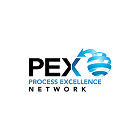

Forward-thinking enterprises are harnessing Generative AI (GenAI) as the new lean to drive operational excellence, agility, and future-ready performance.
Lean and Six Sigma have long been the cornerstones of operational excellence (OPEX). These methodologies have shaped how Toyota built cars and how banks improved services—reducing waste, boosting quality, and keeping teams focused. But markets are evolving fast and expectations have changed—and GenAI is quickly emerging as the key to delivering on them.
GenAI is moving beyond efficiency and fundamentally changing how work gets done. If Lean helped companies streamline workflows and empower teams to make data-driven decisions, GenAI takes it a step further—anticipating, adapting, and automating in ways that were previously impossible.
In PEX Network’s PEX Report 2024/25, over half of respondents (58%) said their organizations have already started conversations about GenAI projects—led largely by operations teams. While only 11% have successfully scaled AI, momentum is building. Business leaders believe AI’s impact on OPEX could rival—or even surpass—what Lean achieved in its prime.

From Lean to AI-powered OPEX
GenAI supercharges Lean principles in four key areas:
-
Adaptive decision-making
GenAI builds on Lean’s data-focused mindset, but it operates at speeds and scales previously unattainable. It can sift through massive volumes of both structured and unstructured data, revealing patterns and bottlenecks before they affect performance and allowing companies to course correct in near real-time. For example, GenAI helped a financial institution improved fraud detection. By analyzing transaction records along with unstructured sources like news and social media, the AI caught subtle red flags much faster, leading to fewer false alarms, happier customers, and more time for staff to focus on real threats.
-
Human-centered creativity
Lean encourages frontline workers to spot inefficiencies and propose improvements. GenAI goes one step further by taking over routine tasks and freeing up teams for strategic thinking or creative problem-solving. For example, GenAI managed 70-80% of customer interactions for a major electronics manufacturer. As AI handles routine inquiries, service teams are free to tackle more complex issues and provide more personalized support. Response times dropped, and the overall experience improved.
-
Rapid iteration
Lean practitioners typically run multiple small experiments to refine processes. GenAI takes rapid iteration to another level by modelling, simulating, and testing various improvement scenarios in near real-time. For instance, an entertainment software producer launched more than a hundred AI initiatives in areas like software coding and content creation. Teams found they could release new features faster, testing ideas quickly and refining them based on near-instant feedback loops.
-
End-to-end integration
Both Lean and GenAI require holistic thinking—looking at entire value streams rather than siloed tasks. In the same way Lean targets upstream and downstream inefficiencies, GenAI links data, workflows, and feedback loops across an organization.
What is stopping organizations from adopting “AI Lean” faster?
While GenAI’s benefits are clear, some companies are hesitant to invest heavily until the return on investment (ROI) is clearer. Others are concerned about the “hallucinations” that AI models sometimes produce in addition to the compliance and security risks. Robust testing, domain-specific data sets, ethical guardrails, and appropriate human oversight can mitigate these risks.
There is also the question of how to integrate advanced AI technology with legacy infrastructures. In one recent industry survey 43% of OPEX professionals said they are unsure where best to apply AI. Some organizations find themselves with decades-old systems and replacing them overnight is neither feasible nor cost-effective. However, approaches that leverage cloud-based architectures, modular AI platforms, and API-driven connectivity are helping to bridge the gap. With platforms like EdgeVerve AI Next, companies can adopt AI at scale without a rip-and-replace of their existing technology stack.
However, despite these challenges, nearly two-thirds of organizations rank GenAI as a top priority. Let’s take a look at how they can make this adoption successful.

Key success factors for GenAI in OPEX
To ensure OPEX success with GenAI, organizations need to focus on getting the following foundational elements right:
- Set clear, strategic objectives – Just as Lean practitioners identify waste areas to target, GenAI adoption demands up-front clarity on which problems to solve. Narrow pilots with specific ROI targets can pave the way to broader enterprise acceptance.
- Establish robust data pipelines – Set the foundation for clean, governed, and well-organized data systems—both structured and unstructured. Think of this as the “value stream mapping” of AI, ensuring data flows efficiently and is accurate at each stage.
- Adopt a platform-based approach – Integrate GenAI into a cohesive ecosystem that includes RPA, workflow orchestration, and document AI to unlock end-to-end process transformation. This approach also makes it easier to scale from small pilots to full enterprise deployment.
- Invest in training and upskilling – GenAI initiatives flourish when staff at all levels understand its potential and can use it to enhance their roles. A “human-in-the-loop” approach ensures AI outputs are validated and refined.
- Encourage human-AI collaboration – GenAI thrives on context and domain knowledge. Workers provide this context, guide decisions, and interpret outputs—ensuring outcomes are aligned with the organization’s goals and values.
- Ensure leadership support – As with any substantial shift, top-down sponsorship is crucial. Leaders must champion AI projects, allocate budget, and promote a culture of innovation to overcome organizational inertia.

The future: AI agents and the next generation of OPEX
We are moving towards a future where AI acts as a fundamental operational layer. In such an environment, processes could self-monitor and self-correct. AI-driven systems could personalize workflows for each employee or customer, delivering exactly what is needed when it is needed. Agentic AI is already orchestrating workflows, foreseeing bottlenecks, shifting resources, and maintaining compliance to deliver 20–40% efficiency improvements across critical functions.
“Instead of just providing answers, AI agents bring context and memory to solve problems.”
– Sathish EV,
director at EdgeVerve
“Five years down the line, people will work less and less in the run time, and they will start contributing more and more in the design time.”
– Shashidhar N,
global product head, EdgeVerve
Loved what you read?
Get practical thought leadership articles on AI and Automation delivered to your inbox


Loved what you read?
Get practical thought leadership articles on AI and Automation delivered to your inbox
Organizations that blend Lean principles with GenAI will move faster, make better decisions, and redefine operational excellence. Yes, there are costs, compliance rules, and skill gaps to tackle, but early adopters report quicker turnarounds and happier customers.
For many companies, the success of these initiatives will hinge on balancing AI-driven automation with human expertise. AI can surface insights, generate solutions, and optimize workflows, but human judgment remains essential for strategic direction, governance, and ethical considerations.
Disclaimer Any opinions, findings, and conclusions or recommendations expressed in this material are those of the author(s) and do not necessarily reflect the views of the respective institutions or funding agencies






